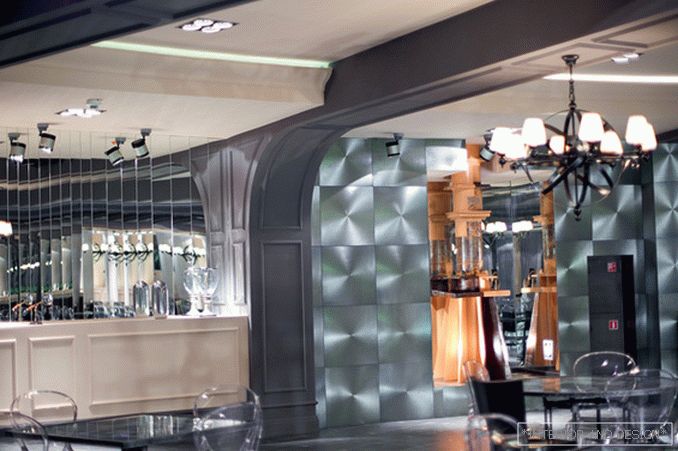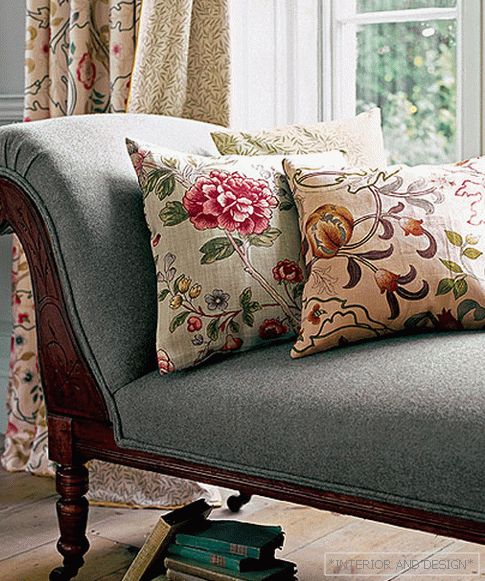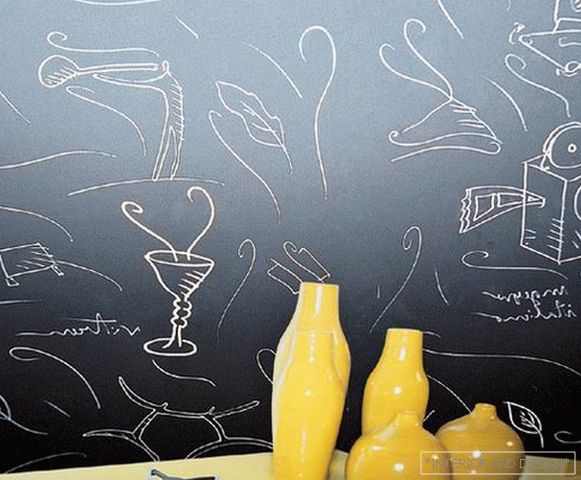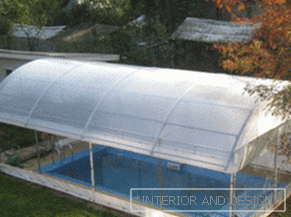 Often in hot summer you want to plunge into the water, for example, in a river or a lake. But sometimes the reservoirs are located far enough. In such cases, the ideal solution would be a swimming pool on the site.
Often in hot summer you want to plunge into the water, for example, in a river or a lake. But sometimes the reservoirs are located far enough. In such cases, the ideal solution would be a swimming pool on the site.
When arranging the pool, it is necessary to take into account the specifics of the location of the pool in the dacha. In close proximity to the trees, the waterproofing of the pool may be damaged, since in hot weather their roots will reach for water. Also, before bathing, you will constantly need to remove the leaves, if left in the water, they will quickly decompose and promote algae reproduction.
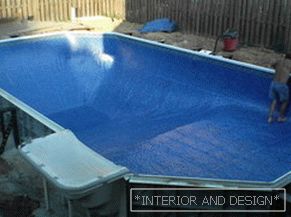 If there are places on the site with different types of soil, then it is worthwhile to choose clayey soil, as it does not let water through well.
If there are places on the site with different types of soil, then it is worthwhile to choose clayey soil, as it does not let water through well.
The device of the pool on the site with a slope would save on earthworks.
It is also necessary to foresee the possibility of heating the water in the winter if the pool is to be operated at this time. Otherwise the water will freeze and waterproofing may be damaged.
When positioning the pool, consider the following factors:
- soil type;
- distance to the nearest buildings (at least 2−3 meters);
- depth of groundwater;
- plot slope;
- proximity of trees
Content
- 1 Types of pools for summer cottage
- 2 DIY pool building technology
- 2.1 Installation of the pool
- 2.2. Lead the main engineering systems to the pool
- 2.3 Waterproofing and ventilation of the pool
- 3 Finishing the pool
Types of pools for summer cottage
There is a huge selection of options for the method and device pools. Basically, in the suburban areas erect pools of the following types:
- inflatable;
- frame;
- stationary.
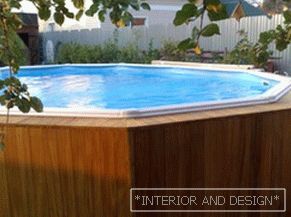 Inflatable pools are best suited for children. Financial expenses on such a pool will be minimal, relative to other types of pools.
Inflatable pools are best suited for children. Financial expenses on such a pool will be minimal, relative to other types of pools.
The next type of pool - frame. These pools have about a meter high. The geometric shape can be absolutely any. Frame itself made from wood which is treated with lacquer or paint, strong supports are installed on the sides, the basin is lined with special waterproofing material. The service life of the frame pool is approximately three years. You can extend the life when replacing wood with metal, but it will be much more expensive.
The stationary pool will last much longer. This pool can be built with your own hands. He may also be absolutely any shape and sizes. The choice of form depends on the preferences of the owners, the landscape of the site, the complexity of work and costs. Even when choosing a form you need to consider the type of pool. Pools are overflow and skremernye. Overflow pools look very impressive, because the water in them is poured to the brim. Along the perimeter of such pools is arranged a special overflow gutterin which water is collected, then it enters the filtration plant and then, through the holes in the bowl, again into the pool.
Overflow pools provide good water circulation and, as a result, its best cleaning. In skrimernyh pools, water should be poured about ten centimeters below the edges. Water is taken for filtration through special holes - screamers. The purified water again enters the pool through the holes that are opposite the shammer.
The construction of fixed pools usually begins from the territory marking preparatory work and fragments of the pit. Also, prior to construction, it is necessary to coordinate the project with the relevant government agencies.
DIY pool construction technology
- Territory preparation for the construction of the pool.
- Installation of the pool.
- Leading the main engineering systems to the pool.
- Waterproofing and ventilation of the pool.
- Finishing the pool.
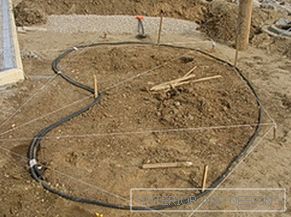 Marking the territory produced with the help of twine and a peg. If the pool has impressive size It is necessary from the outside to provide a hollow room for inspection and repair of pipes. Such a room is also will save the pool from the effects of expanding frozen ground in winter.
Marking the territory produced with the help of twine and a peg. If the pool has impressive size It is necessary from the outside to provide a hollow room for inspection and repair of pipes. Such a room is also will save the pool from the effects of expanding frozen ground in winter.
After choosing the location and marking the area you need dig a pit for the future of the pool. If the pool is large, you must provide access for equipment. The pit for a small pool can be dug by hand. In order to avoid shedding the walls trench, you need to do them with a small slope. The bottom of the pit is desirable to do with a slope in the direction of the drainage pit. The next step is to install the pool bowl.
Installation of the pool
The walls of the pool can be made of the following materials:
- polystyrene foam or concrete blocks;
- steel sheet;
- reinforced concrete;
- You can also purchase a special ready-made plastic bath.
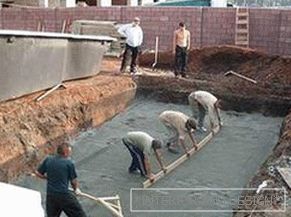 Finished plastic tubs will reduce the time to build a pool and make it a little easier to install. However, such baths cannot be used in areas where freezes through the soil so maybe pushing the bowl. After installing the finished bath, the space between the walls of the bowl from the pit is filled with earth.
Finished plastic tubs will reduce the time to build a pool and make it a little easier to install. However, such baths cannot be used in areas where freezes through the soil so maybe pushing the bowl. After installing the finished bath, the space between the walls of the bowl from the pit is filled with earth.
In other cases, you must first make the bottom of the future pool. The bottom of the pit is covered with sand, which carefully rammed. The thickness of the sand layer is approximately twenty centimeters. The next layer is gravel, which also needs to be tamped. Further all required drain and bulk communications keep within. After that you can pour the bottom of the concrete. The thickness of this layer must be at least five centimeters. On top of the concrete layer is laid reinforcing mesh which is also poured with another layer of concrete 5 cm thick.
Now you need to wait for the moment when the concrete the bottom will harden. After that, you can proceed to the construction of walls.
When erecting monolithic reinforced concrete walls, it is necessary to install the original formwork of the future walls, in which holes for the pool equipment should be cut in advance. Walls poured in layers. Reinforcement mesh is also installed in the first layer. The thickness of one layer is about fifteen centimeters. About after three days You can remove the formwork walls. Next, the internal walls plastered and perform finishing work.
If the installation uses polystyrene blocks, the concrete is poured into special cavities of the blocks. Also the armature is inserted into these cavities. Before concreting it is necessary to arrange all the necessary communications of the future pool. Such blocks have special mounts that simplify their installation. The works are completed by laying the cladding film, which is lined with the resulting pool bowl from the inside.
Using steel sheet as wall material, you can get a round or oval-shaped pool. The fastening of the steel tape in a circle is made with a special profile. This profile provides strength and stability of the structure. facing film are fastened around the perimeter of the bowl with a mounting ring. The installation of technical equipment can only proceed after filling such a pool with water that presses the film tightly to the walls.
Leading the main engineering systems to the pool
Engineering systems are devices that are necessary for draining and supplying water. There is a water intake from the surface of the pool, then its cleaning and the water is returned to the tank.
-
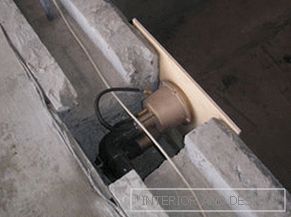 Devices for water supply and intake are placed on opposite sides of the pool. Holes for them are usually specially pre-cut in the walls of the future pool.
Devices for water supply and intake are placed on opposite sides of the pool. Holes for them are usually specially pre-cut in the walls of the future pool. - To drain the pool install drain pipe at the bottom of the structure. Its diameter should be not less 10 centimeters for increase of efficiency of outflow. It is advisable to close the drain pipe with a grate to prevent clogging.
- In cases where it is not possible to install a drain pipe, an electric water pump can be used to drain the tank.
Waterproofing and ventilation of the pool
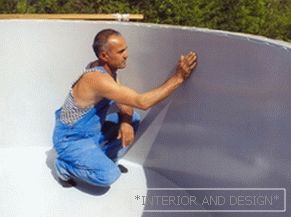 It is worth paying special attention to the performance of waterproofing works, since this will allow to extend life time structures and protect it from corrosion.
It is worth paying special attention to the performance of waterproofing works, since this will allow to extend life time structures and protect it from corrosion.
At the junction of structures, seams are formed that can leak. To fix this problem you need to seal them. This can be done using a bentonite cable, pouring a sealing profile, and laying special polymeric materials.
The ventilation device is needed if the pool is located indoors. The size of the exhaust system must be commensurate with the room. Supply air should not be directed to the surface of the water. Ventilation systems must also be sealed.
In rooms with a swimming pool is not recommended to install air conditioning. It is better to install the device to reduce moisture in room.
For extra comfort, install equipment that warms the water. For these purposes, I use instantaneous water heaters or heat exchangers, which are connected to the central heating system and heat the water using the method of heat redistribution.
Pool decoration
The main requirement for materials that are used for finishing the pools is low water absorption. For these purposes, you can use tile or PVC film. The floors of the pool can be done in bulk. Such floors are very resistant to external influences. They are performed using a special polymer solution. Under the solution can be applied to any figure.
After finishing works, only run water to the pool and enjoy your creation.

